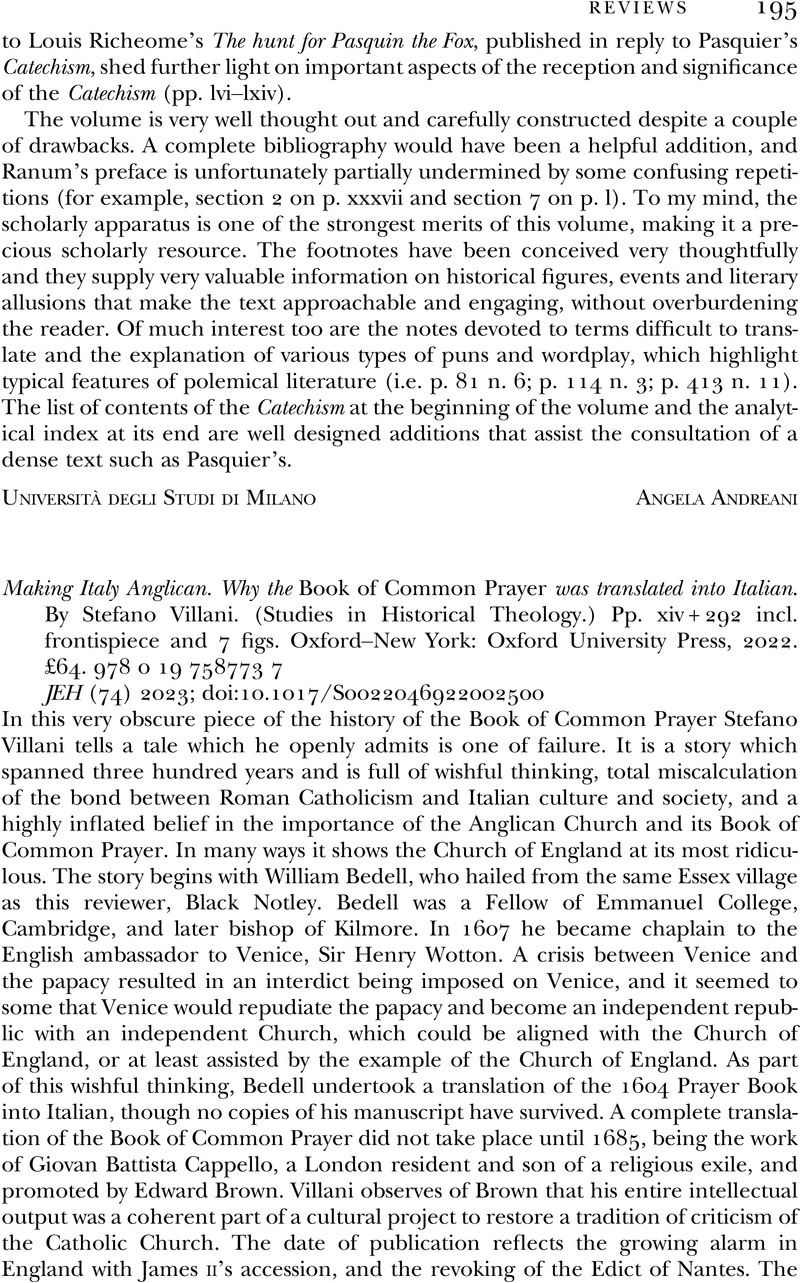No CrossRef data available.
Article contents
Making Italy Anglican. Why the Book of Common Prayer was translated into Italian. By Stefano Villani. (Studies in Historical Theology.) Pp. xiv + 292 incl. frontispiece and 7 figs. Oxford–New York: Oxford University Press, 2022. £64. 978 0 19 758773 7
Review products
Making Italy Anglican. Why the Book of Common Prayer was translated into Italian. By Stefano Villani. (Studies in Historical Theology.) Pp. xiv + 292 incl. frontispiece and 7 figs. Oxford–New York: Oxford University Press, 2022. £64. 978 0 19 758773 7
Published online by Cambridge University Press: 29 December 2022
Abstract
An abstract is not available for this content so a preview has been provided. Please use the Get access link above for information on how to access this content.

- Type
- Reviews
- Information
- Copyright
- Copyright © Cambridge University Press 2022



